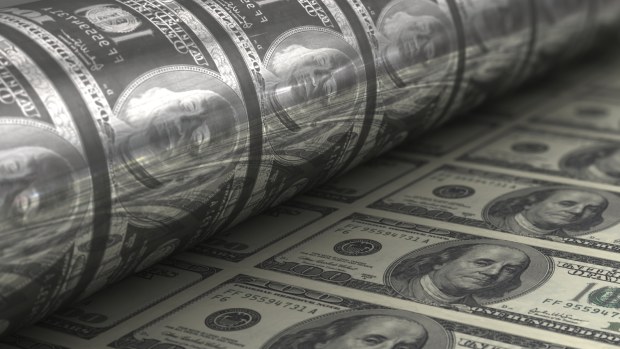Australian dollar's surprise rally will end, US65c more likely

Currency traders, a fickle lot at the best of times, are clearly revelling in catching everyone off guard.
It wasn't meant to be this way but the Australian dollar beached US75¢ this week after it was fetching just US71.85¢ when the calender year began, with calls for it to go lower. Much lower.
But the Aussie, as it's known by those who trade it for a living, is on a tear after a dramatic re-assessment of Donald Trump and his future growth policies.

The US dollar has copped a whack from traders this week. FDC
Even the trade weighted index (TWI), a measure of the Aussie dollar's strength against a basket of other currencies, has risen, going to 65.4¢ from under 64¢ at the end of 2016.
The spike in the $A is an example of what can happen now that Trump is in charge. What was meant to go down can now go up at the mere push of a Twitter button or an off the cuff remark.
Investors have already bought the growth trade from Trump and risky assets have done well since he was elected.
But if there are any concerns (and some emerged this week) that he won't follow through with his policies, then Wall Street will take a tumble.
This week investors got nervous and the US dollar fell, which sent the $A higher.
What really drives the $A seems to lurch between a combination of commodity prices, the US dollar, interest rates and the general level of risk tolerance among the major players.
As it stands, the US dollar has copped such a whack from traders this week that even the Mexican peso and Turkish lira got snapped up so it's hardly surprising the $A did too, especially given the $A and its link to rising commodity prices.
If that wasn't enough, local traders also started to price in rate hikes from the RBA.
Intensifying expectations of a rise in US interest rates (which will put a dent in the $A's appeal) should rev up demand for the greenback, with some experts like Paul Dales at Capital Economics forecasting four rate hikes from the Federal Reserve this year and another four in 2018.
If that's the case, then the global love for the US dollar that's been around for some time now shouldn't diminish too much more and the $A should fall back.
Dales has a US70¢ forecast by the end of this year but wouldn't be surprised if it fell to US65¢. He also thinks the RBA will cut the official cash rate to 1 per cent from it¢s current level of 1.5 per cent.
Indeed, helping the $A fall will be a drop in commodity prices and a greenback that should also do better amid the threat of protectionism from Trump and talk of a "border tax" that will hit companies that move jobs outside the United States.
Ray Attrill, co-head of FX strategy at NAB, thinks in theory a border tax wouldn't work and "the US dollar should rise to neutralise the impact".
But he also says that if a "border tax means a much stronger US dollar, then it almost certainly means a much weaker $A".
And just because it wouldn't work doesn't mean it won't happen.
"We are after all already facing the prospect of one harebrained policy pronouncement soon after January 20 if the Trump administration chooses to denounce China as a currency manipulator," says Attrill.
Welcome to trading and investing with Trump in charge.
Subscribe to gift this article
Gift 5 articles to anyone you choose each month when you subscribe.
Subscribe nowAlready a subscriber?
Latest In Equity markets
Fetching latest articles